No, it’s not Silversun. Sit down, Brian. Let someone else try to answer. Citizen Sleeper 2: Starward Vector is a sci-fi RPG with lots of dice and a strong nod to tabletop RPGs. The first Citizen Sleeper saw your bio-robotic protagonist land on a doughnut-shaped space station, where they learn to forge a new life among interstellar farmers and ramen-serving rapscallions. In the sequel, the demo I played [smug face], the hook is a little different. This time they chase you through lots of truck stops, colonies, warehouses and abandoned places. All the while, your incompetent crew will be clashing and scrambling. It still hasn’t dawned on you, has it? Yuck. I assume the game designer will tell you then.
“I absolutely love Farscape,” says Gareth Damian Martin, game designer and studio head of Jump Over The Age. “I think what’s fun about Farscape is that all the characters are on the run from something, and the only reason they’re all on the ship together is because they were all prisoners on the same prison ship. And that’s the hook for me.”
Farscape was a fun, alien space show with a cast of aliens and a single person with a known penchant for pop culture references. Citizen Sleeper 2 doesn’t hit all those notes, judging by my brief playthrough of the early game, but the setup is similar.
Watch on YouTube
“I’ve always wanted to do one of these crew and ship games,” says Martin. “I spent years desperately waiting for ones to come out that I might like, and none of them really hit the spot.
“I like it in Farscape where every now and then there’s an episode where they’re really on the run… and then there’ll be an episode where it’s like, oh, there’s no danger right now… .”
Of course, Martin cites other references as inspiration. Deep Space 9, William Gibson, even Tintin gets a shout-out (“I always liked how Tintin just fell out sometimes…”). However, it seems to be the boisterous recklessness of Farscape that flavors the RPG sequel.
“I’m always a big fan of this type of story about normal people forced into dire circumstances, improvising and trying to make things work,” says the developer. “I’m not a big fan of stories about powerful heroes.
It’s fair to say, though, that the quietly caring tone of the first game’s writing remains intact. I certainly haven’t seen anything as capital-K Kooky as Ben Browder arguing over pizza with a wrinkly man in a sadomasochist suit (even as a Farscape junkie, that’s a relief). My adventure in the demo saw my character arrive at a gritty space station of mechanics and dock workers. A lot of that was taken up by the tutorial needed to get used to the dice allocation decisions, which are mostly similar to the first game.
Each day you roll a handful of dice and sail past the station or ship you’re attached to, dragging the dice into little boxes to act. Eat food in the canteen to restore some energy. Gamble with losers at the wharf. Schmooze with the space welders to see if you can get a clue for some ship parts you desperately need. The higher the dice you place, the more chance you have to succeed. It’s simple, clean, but it gets more complicated as you progress. As a storytelling tool, it also presents some challenges.
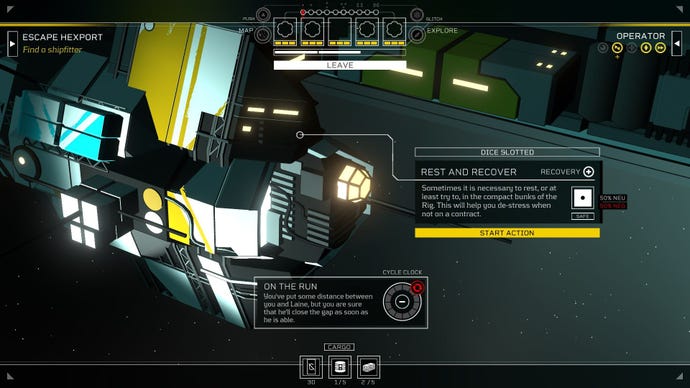
“When you’re making games, you have to accept that you’re inherently quantifying everything,” says Martin, “because a game is just a bunch of numbers. So even if the player doesn’t see these numbers, they definitely exist.
“It’s fun to push and pull it and have the player… maybe sometimes feel uncomfortable telling their favorite character what to do. I love the idea of this kind of narrative game infecting the gameplay mechanics.”
Martin specifically talks about the “contracts” you’ll be making, often as part of a team. This is a new feature for the sequel, and that’s where the “hilarious band of misfits” flavor comes to the fore. When you embark on a contract, you can choose additional crew members to accompany you, and they will receive their own dice in your pool. But he also takes “stress” damage on any failed roll. I didn’t see what happens in terms of dialogue when the stress is too much for someone. But I ran into a dramatic disagreement with a hacker-historian named Juni, whom I took on a mission to retrieve an ancient data core. Juni was nice. Too bad I had to leave her on an abandoned ship… I’m sure she’s fine.
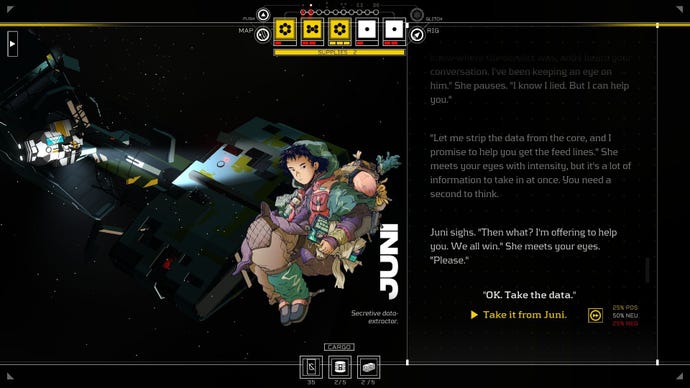
Citizen Sleeper has always been at his best when leaning heavily into these troubled relationships, so I’m glad to see more opportunities for both kindness and desperate acts of skulduggery in the sequel. Martin might look to Jim Henson’s Aliens for inspiration, but it’s clear the game also wants to delve into the murky lake of big questions that sci-fi and cyberpunk traditionally like to drench its readers in.
“I think central to the Citizen Sleeper universe is the question: is it disheartening that despite all the life and connections we can have with people, our lives are ultimately dictated by forces beyond our control that can destroy us? or is it incredibly beautiful that despite these structures we can create connections and meaning that can never be taken away from us?”
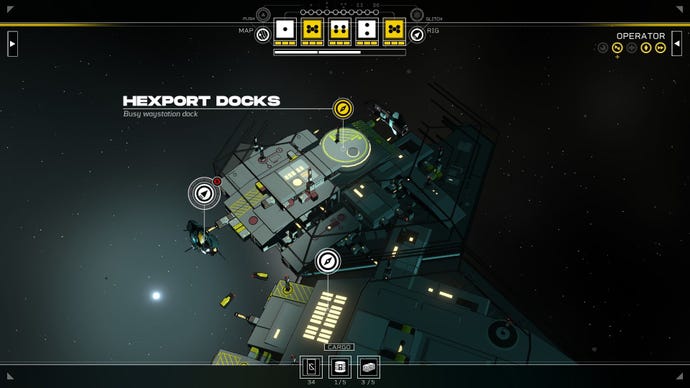
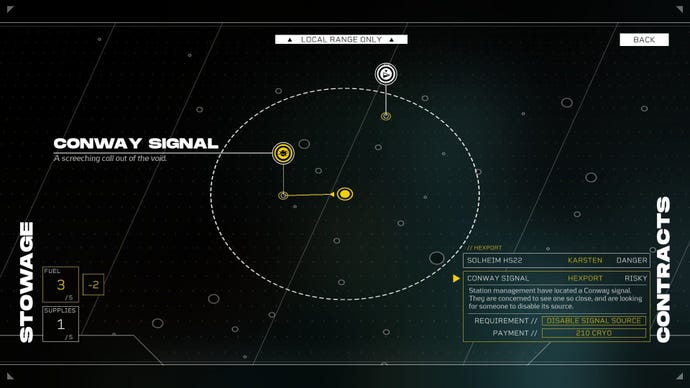
“Both” is the implicit answer offered by this sometimes-sad, sometimes-hopeful universe. The sequel takes place in a region of space called the Starward Belt (fans of the first game might recognize the name of the region and a few familiar characters who escaped to it…). But in the distant regions adjacent to it, rumbles of war, pain and injustice are heard. It’s one way Martin hopes to use science fiction as a mother-of-pearl mirror into our own world, a parallel for those of us watching the ongoing wars in Ukraine and Palestine from afar. But that’s not the only way Martin hopes to stave off the troubles they’re currently experiencing.
“I think one thing I’m looking into more is how people treat you as a Sleeper,” says Martin. “I think the level of hostility I’ve felt towards non-binary or non-presenting people in the UK is quite shocking.
“I think that’s something that happens a lot more in Citizen Sleeper. There are more characters who, when they look at you in a certain way, remind you that you’re a Sleeper and what that means and what your position is.”
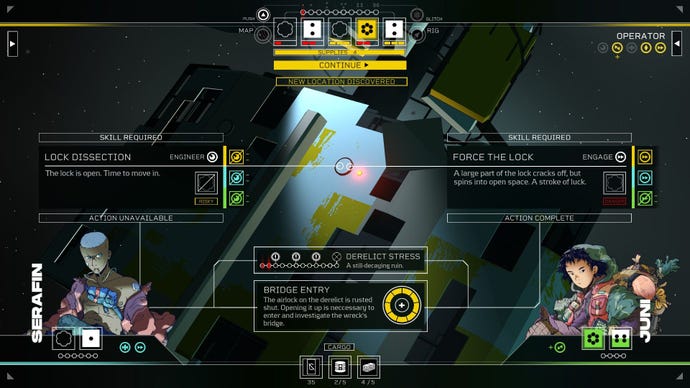
Martin, who is also non-binary, says they don’t always want to hide the issue under layers and layers of subtext. One of the characters from the first game (I won’t spoil who) returns in this installment, having shed all gender markers. Yet Martin also simply wanted to bring this person back out of a natural desire to capture a story that was intentionally left hanging.
“I’m constantly leaving a lot of loose ends when I’m writing. And then I decide which ones to pick up… In Citizen Sleeper 1, there are a lot of characters that go to the Starward Belt, so it was just obvious to me that if I went for it place, it’s really fun to pick up those loose ends and see where they go.
“Sometimes I’ll write half a story and then leave a loose end there and come back and finish it later in development… it feels like part of the process of making Civil Sleep is just weaving. these stories together, it happens much more naturally if it’s all free.”
I’m up for it. Until we stay also wanting. Citizen Sleeper 2 isn’t out yet, but given how quickly Martin committed to other stories in that universe after the first game (it came out barely a year before a sequel was confirmed), I can’t help but wonder if he plans to wrap it up as a trilogy. However, it looks like the developer might be taking a longer hiatus this time around.
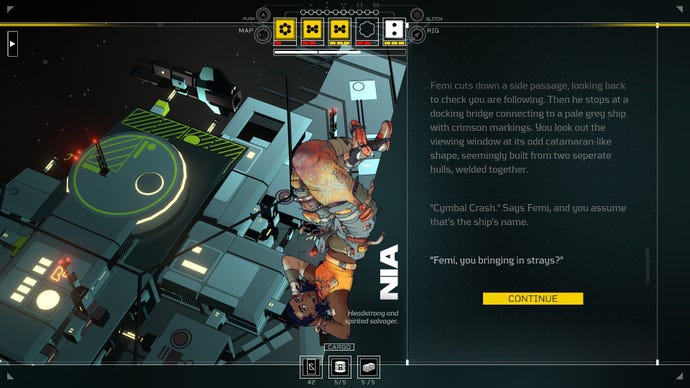
“I certainly wouldn’t go straight to work on Citizen Sleeper 3,” says Martin. “DLC is going to be about whether or not I feel like there’s room for it, how much stuff I get in the game that I want. But I think there’s definitely going to be a point very soon for me too where I’m ready to be.” , like, let’s make a Citizen Sleeper board game…”
When Farscape ended as a TV series in 2003, it had some loose ends of its own. The producers had to struggle to put together a 2-episode miniseries that would explain how certain characters could survive when they were broken into thousands of little pieces. But they did it. I don’t know how the Sleeper Saga will one day end, but I’m sure my dice rolling and decision-making will make a similarly neat bow to a completely finished thing. No unresolved tension here. No, sir. What are you asking? June? Uh It’s, yeah, probably out there. Somewhere.
I’m sure he’s over it.